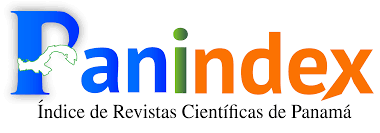

This work is licensed under a Creative Commons Attribution-NonCommercial-ShareAlike 4.0 International License.
Esta obra está bajo licencia internacional https://creativecommons.org/licenses/by-nc-sa/4.0/deed.es
La revista (y sus contenidos) emplean las licencias Creative Commons, específicamente la del tipo CC BY NC SA 4.0, la cual establece que “el beneficiario de la licencia tiene el derecho de copiar, distribuir, exhibir y representar la obra y hacer obras derivadas siempre y cuando reconozca y cite la obra de la forma especificada por el autor o el licenciante”. La licencia del tipo CC BY NC SA 4.0 contempla tres categorías,
- Atribución.
- No Comercialización de la obra.
- Compartir igual
Los lectores son libres de:
- Compartir — copiar y redistribuir el material en cualquier medio o formato
- Adaptar — remezclar, transformar y construir a partir del materialLa licenciante no puede revocar estas libertades en tanto usted siga los términos de la licencia
- Siempre y cuando se respeten y contemplen la atribución de autoría y la no comercialización del material.
Abstract
The following investigation aims to evaluate the hidden costs generated by employees during teleworking, due to the Covid-19 pandemic in the Republic of Panama. The sample consisted of 383 teleworkers to whom the data collection instrument related to the costs that occur as a result of teleworking was applied, since they had to face extra expenses for this work method. An analysis was carried out using the main descriptive statistics and the Mood median, determining the mean, median and mode of hidden costs in the country and the most relevant differences in hidden costs between the different categories of teleworkers. At the end, the total average costs generated by teleworkers and the expenses that are associated with the teleworker variables are presented, which are: gender, age range, work area, telework modality, working time, the economic availability and the size of the company. It was found that in Panama for teleworking, women have higher costs than men; youth and young adults have lower costs; the work areas with the highest costs were education and marketing, while the lowest were human resources and finance; small and medium-sized businesses generate a greater amount of hidden costs for their employees; the higher the teleworker's income, the higher the hidden costs; the more hours dedicated to teleworking, the higher the costs. Finally, it is confirmed that there is a significant difference between the variables of teleworkers and the hidden costs generated.
References
Ardila, Carlos Orlando., & Rodríguez, Zambrano Hernando. (2015). Análisis de impacto del teletrabajo en los resultados de gestión de las organizaciones. Estudio de caso en un área de una organización financiera en Bogotá. Disponible en: https://repository.unimilitar.edu.co/bitstream/handle/10654/14011/TESIS%20TELETRABAJO%2021-05-2015.pdf?sequence=2&isAllowed=y
Bazán de Franco, Y., & Tovares, R. (2022). La gestión del talento humano a través del teletrabajo. Revista FAECO sapiens, 5(1), 192-215. [fecha de Consulta 10 de julio de 2022]. ISSN: 2644-3821. Disponible en: http://portal.amelica.org/ameli/journal/221/2212865013/
Benavides, Fernando G.; Amable, Marcelo; Cornelio, Cecilia; Vives, Alejandra; Milián, Lino Carmenate; Barraza, Douglas; Bernal, Dinora; Silva-Peñaherrera, Michael; Delclos, Jordi O futuro do trabalho após a COVID-19: o papel incerto do teletrabalho no domicílio Revista Brasileira de Saúde Ocupacional, vol. 46, e31, 2021 Fundação Jorge Duprat Figueiredo de Segurança e Medicina do Trabalho - FUNDACENTRO DOI: https://doi.org/10.1590/2317-636900003782
CEECAM. (3 de abril de 2020). Resultado de la II encuesta empresarialdel coronavisrus en Panamá. Panacamara. Recuperado de: https://www.panacamara.com/resultados-finales-de-ii-encuesta-empresarial-impacto-del-coronavirus-en-panama/
De Tyler, C., Campines Barría, F., & González Jiménez, T. (2021). Teletrabajo y el impacto de la pandemia COVID-19 sobre el proceso administrativo empresarial. Visión Antataura, 5(1), 92–107. Recuperado a partir de https://revistas.up.ac.pa/index.php/antataura/article/view/2200
Frassati-Mora, G., & Hernández, I. (2022). Competencias de los colaboradores y buenas prácticas aplicadas al teletrabajo en las empresas de Panamá. Latitude, 1(15), 30–56. https://doi.org/10.55946/latitude.v1i15.177
ILO (2020). Teleworking during the Covid-19 pandemic and beyond: A Practical Guide. International Labour Organization.
Ley 126. (2020, 18 febrero). Mitradel. Panamá. Recuperado de: https://www.mitradel.gob.pa/decretos-y-resoluciones-en-materia-laboral-por-covid-19/ley-126-de-18-de-febrero-de-2020-teletrabajo-asamblea-nacional/
Minitab (2019). Interpretar los resultados clave para la Prueba de la mediana de Mood. (C) Minitab, LLC. All rights Reserved. 2020. Recuperado de: https://support.minitab.com/es-mx/minitab/19/help-and-how-to/statistics/nonparametrics/how-to/mood-s-median-test/interpret-the-results/key-results/
Patiño, A. (2021, agosto). Una mirada al teletrabajo en Panamá. Desafíos para el trabajo decente.
PES (2020, abril). Medidas de las empresas ante el Covid-19: resultados de las encuestas. Panamá en Salarios.
















